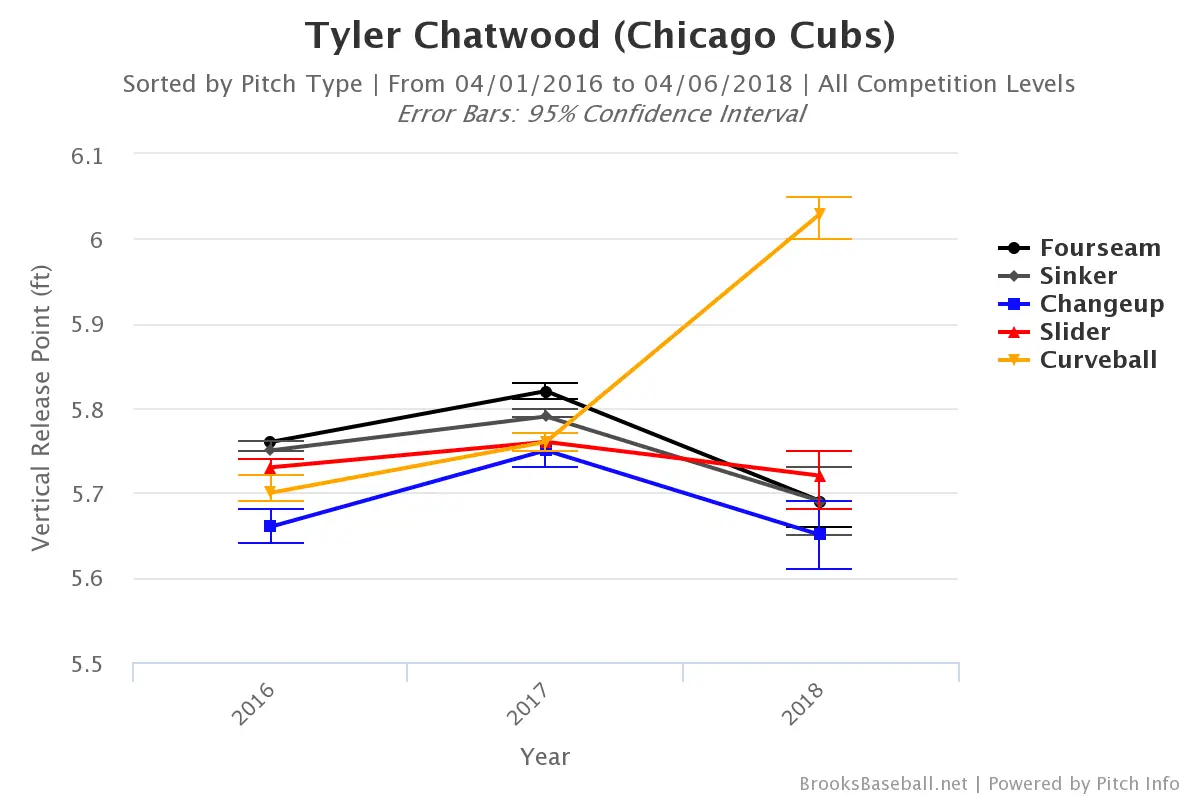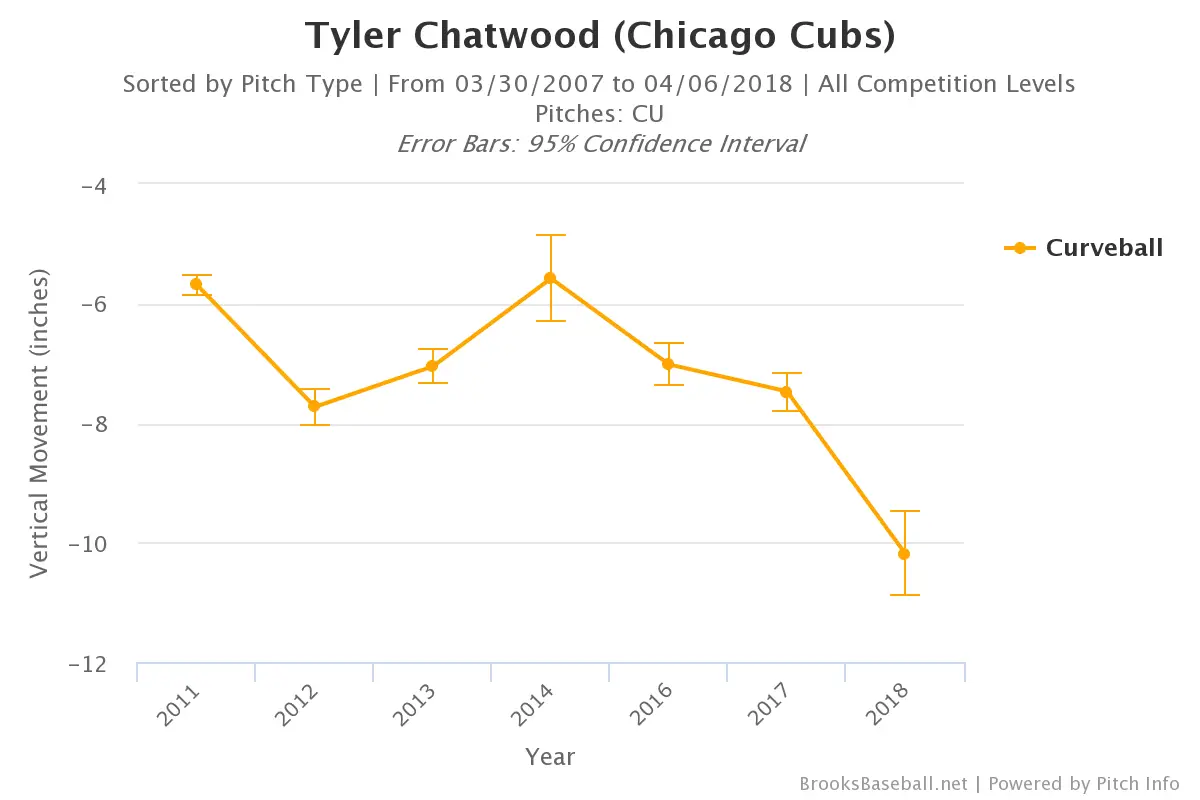
Whoa, Chatwood’s Curveball Release Point is Really High and That’s Good
So, I recently wrote about how Tyler Chatwood’s release point was lower in his first start of the season. I don’t know what happened with data on Brooks Baseball, but it’s since been adjusted. And by adjusted, I mean it’s completely different.
In that first start, Chatwood’s curveball release point was actually a quarter foot (that’s three inches) higher, not lower like we saw in Brooks Baseball’s initial data release. In other words, he’s actually throwing wayyyyy more over the top. I can’t believe just how different the data looks. Take note of the yellow line below, which is his curveball release point and look at how much higher it is.
Eno Sarris pointed out that Chatwood could maximize his spin rate by throwing more over the top, and that’s exactly what looks like is happening here. We know that the Cubs had targeted the righty despite mediocre past performance largely due to his ability to spin the ball. However, I found earlier that Chatwood’s elite spine rate didn’t correlate to whiffs or run prevention.
That might change if he can better translate spin to movement, which is perhaps why he’s coming more over-the-top with the curve. This is a pretty “wow” graph, folks.

That’s probably why his curveball was dropping 50 percent more in his opening start compared to previous seasons.

In summary, Chatwood’s release point was noticeably higher when he pitched against the Reds. That translated to more movement and could result in more successful outcomes right away.

